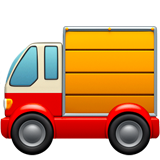Understanding Readiness
Let’s start with the typical signs of potty training readiness:
Your child might be ready to begin their first steps into potty training if they:
- Show interest in the toilet or potty
- Exhibit discomfort or awareness of their wet or dirty nappies
- Start having more predictable bowel movements
- Are able to follow simple instructions
Recognising these signs is crucial for starting potty training at the right time, don’t rush or pressure them to start - every child is ready in their own time. Premature attempts can lead to frustration and cause resistance for both you and your child, while delaying too long might miss a window of enthusiasm and readiness.
Choosing the Right Tools
A child-friendly potty is essential for creating a positive potty training experience. Our range of potties are not only designed with cute colours and friendly characters but are also comfortable, and portable, making them the only potty you’ll need for the process.
Widely recognised as the best potty for toddlers, My Carry Potty, is known for its portability and leak-proof design, having helped over a million toddlers to potty train, it is an excellent option for busy families frequently on the go. Equipping your child with potty training pants can also ease the transition from nappies, offering them a sense of independence with the security of protection against small accidents.
Setting the Stage for Success
- Create a Routine: Consistency is key. Establish a regular schedule for potty breaks, especially after meals and before bedtime, to build a habit and reinforce regular potty use.
- Educate and Motivate: Use books, videos and stories about potty training to demystify the process for your child. Positive reinforcement, such as praise or small rewards for successful attempts, can motivate them to keep trying and help them to recognise their progress. The use of visual aids is also a game-changer, use a potty progress chart and stickers to make the process more tangible and rewarding.
- Dress for Success: Choose clothing that is easy to take off quickly, reducing barriers to using the potty when the urge to go strikes.
Managing Expectations
Despite what some online guides and influencers say, potty training does not happen overnight! Be prepared for accidents and setbacks—they are all part of the learning process. Maintain a calm and supportive approach, reassuring your child that mistakes are okay and are simply an opportunity to do better next time.
Emphasising Hygiene
Teach the importance of hygiene from the start, including wiping properly and washing hands after using the potty. Making these practices part of the routine early on instills good habits for life.
Addressing Fears and Hesitations
It's not uncommon for toddlers to have fears or reservations about using the potty. Address these concerns gently, offering reassurance and understanding. For many children, transitioning from a potty to a regular toilet requires additional support, such as a step stool or a smaller toilet seat to make them feel secure.






